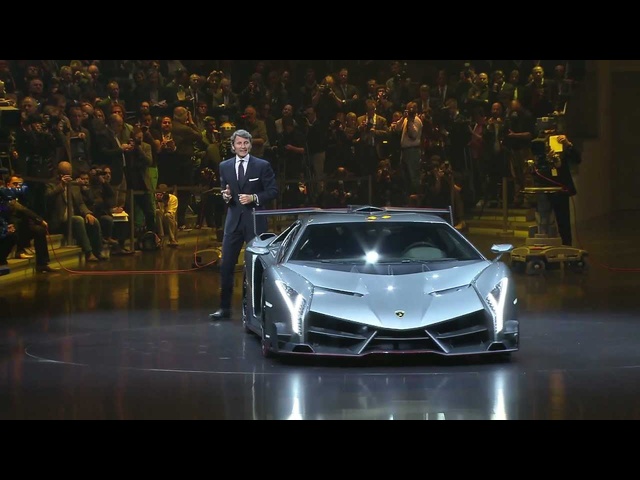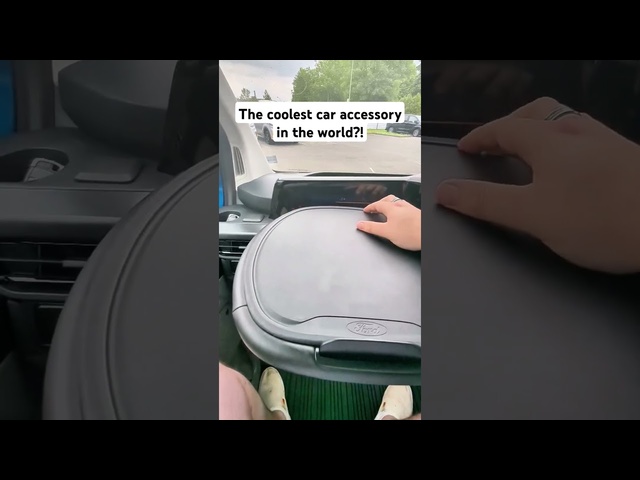Views: 57700
Ford Mustang 1965 HD Full Original Promo In Detail Classic Funny Commercial - 2014 Carjam TV
CARJAM TV - Subscribe Here Now http://www.youtube.com/carjamradio
Like Us Now On Facebook: http://www.facebook.com/CarjamTV
For The World's Best Car Videos
Website: http://www.carjamtv.com
Tumblr: http://www.carjamtv.tumblr.com/
Facebook: http://www.facebook.com/CarjamTV
Pinterest: http://www.pinterest.com/carjamtv/carjam-tv/
The Ford Mustang is an automobile manufactured by the Ford Motor Company. It was initially based on the platform of the second generation North American Ford Falcon, a compact car.[1] Introduced early on April 17, 1964,[2] and thus dubbed as a "1964½" model by Mustang fans, the 1965 Mustang was the automaker's most successful launch since the Model A.[3] The Mustang has undergone several transformations to its current fifth generation.
The Ford Mustang (first generation) created the "pony car" class of American automobiles—sports car-like coupes with long hoods and short rear decks[4]—and gave rise to competitors such as the Chevrolet Camaro,[5] and Pontiac Firebird, AMC Javelin,[6] as well as Chrysler's revamped Plymouth Barracuda and the first generation Dodge Challenger.[7] The Ford Mustang (first generation) is also credited for inspiring the designs of coupés such as the Toyota Celica and Ford Capri, which were imported to the United States.
The first-generation Ford Mustang was manufactured by the Ford Motor Company from 1964 until 1973. The introduction of the Ford Mustang created a new class of automobile known as the pony car. The Ford Mustang (first generation)'s styling, with its long hood and short deck, proved wildly popular and inspired a host of imitators.
Ford Mustang (first generation) was initially introduced as a hardtop and convertible with the Ford Mustang (first generation) fastback version put on sale the following year. At the time of its introduction, the Ford Mustang (first generation), sharing its underpinnings with the Falcon, was slotted into a compact car segment.
With each revision, the Mustang saw an increase in overall dimensions and in engine power. The 1971 model saw a drastic redesign to its predecessors. After an initial surge, sales were steadily declining and Ford began working on a new generation Mustang. With the onset of the 1973 oil crisis, Ford was prepared, having already designed the smaller Mustang II for the 1974 model year. This new car had no common components with preceding models. Since it was introduced five months before the normal start of the 1965 production year and manufactured alongside 1964 Ford Falcons and 1964 Mercury Comets, the earliest Mustangs are widely referred to as the 1964½ model.[17] A more accurate description is the "early 1965" model because it underwent significant changes at the beginning of the regular model year. All the early cars, however, were marketed by Ford as 1965 models, Ford Mustang (first generation). The low-end model Ford Mustang (first generation) hardtop used a "U-code" 170 cu in (2.8 L) straight-6 engine[18] with a three-speed manual transmission and Ford Mustang (first generation) retailed for US$2,368. Ford Mustang (first generation) Standard equipment for the early 1965 Mustangs included black front seat belts, a glove box light, and a padded dash board.[19] Ford Mustang (first generation) Production began in March 1964 and official introduction following on April 17 at the 1964 World's Fair.
One option Ford Mustang (first generation) designed strictly for fun was the Ford Mustang Rally-Pac. Introduced in 1963 after Ford's success at that year's Monte Carlo Rally and available on other Ford and Mercury compacts and intermediates, the Rally-Pac was a combination clock and tachometer[22] mounted to the steering column. It was available as a factory ordered item for US$69.30. Installed by a dealer, the Ford Mustang Rally-Pac cost US$75.95. Ford Mustang Rally-Pac Reproductions are presently available from any number of Mustang restoration parts sources.[21] A compass, rear seat belts, A/C, and back-up lights were also Ford Mustang (first generation) optional. The Ford Mustang (first generation) standard interior features of the 1965 Mustang included adjustable driver and passenger bucket seats, an AM radio, and a floor mounted shifter in a variety of color options. Ford Mustang (first generation), The Interior Decor Group was popularly known as "Pony Interior" due to the addition of embossed running ponies on the seat fronts, and also included integral armrests, woodgrain appliqué accents, and a round gauge cluster that would replace the standard Falcon instrumentation. Also available on Ford Mustang (first generation) options were sun visors, a (mechanical) remote-operated mirror, a floor console, and a bench seat. Ford later offered an under-dash air-conditioning unit, and discontinued the vinyl with cloth insert seat option, offered only in early 1965 Ford Mustang (first generation). http://en.wikipedia.org/wiki/Ford_Mustang_%28first_generation%29
Like Us Now On Facebook: http://www.facebook.com/CarjamTV
For The World's Best Car Videos
Website: http://www.carjamtv.com
Tumblr: http://www.carjamtv.tumblr.com/
Facebook: http://www.facebook.com/CarjamTV
Pinterest: http://www.pinterest.com/carjamtv/carjam-tv/
The Ford Mustang is an automobile manufactured by the Ford Motor Company. It was initially based on the platform of the second generation North American Ford Falcon, a compact car.[1] Introduced early on April 17, 1964,[2] and thus dubbed as a "1964½" model by Mustang fans, the 1965 Mustang was the automaker's most successful launch since the Model A.[3] The Mustang has undergone several transformations to its current fifth generation.
The Ford Mustang (first generation) created the "pony car" class of American automobiles—sports car-like coupes with long hoods and short rear decks[4]—and gave rise to competitors such as the Chevrolet Camaro,[5] and Pontiac Firebird, AMC Javelin,[6] as well as Chrysler's revamped Plymouth Barracuda and the first generation Dodge Challenger.[7] The Ford Mustang (first generation) is also credited for inspiring the designs of coupés such as the Toyota Celica and Ford Capri, which were imported to the United States.
The first-generation Ford Mustang was manufactured by the Ford Motor Company from 1964 until 1973. The introduction of the Ford Mustang created a new class of automobile known as the pony car. The Ford Mustang (first generation)'s styling, with its long hood and short deck, proved wildly popular and inspired a host of imitators.
Ford Mustang (first generation) was initially introduced as a hardtop and convertible with the Ford Mustang (first generation) fastback version put on sale the following year. At the time of its introduction, the Ford Mustang (first generation), sharing its underpinnings with the Falcon, was slotted into a compact car segment.
With each revision, the Mustang saw an increase in overall dimensions and in engine power. The 1971 model saw a drastic redesign to its predecessors. After an initial surge, sales were steadily declining and Ford began working on a new generation Mustang. With the onset of the 1973 oil crisis, Ford was prepared, having already designed the smaller Mustang II for the 1974 model year. This new car had no common components with preceding models. Since it was introduced five months before the normal start of the 1965 production year and manufactured alongside 1964 Ford Falcons and 1964 Mercury Comets, the earliest Mustangs are widely referred to as the 1964½ model.[17] A more accurate description is the "early 1965" model because it underwent significant changes at the beginning of the regular model year. All the early cars, however, were marketed by Ford as 1965 models, Ford Mustang (first generation). The low-end model Ford Mustang (first generation) hardtop used a "U-code" 170 cu in (2.8 L) straight-6 engine[18] with a three-speed manual transmission and Ford Mustang (first generation) retailed for US$2,368. Ford Mustang (first generation) Standard equipment for the early 1965 Mustangs included black front seat belts, a glove box light, and a padded dash board.[19] Ford Mustang (first generation) Production began in March 1964 and official introduction following on April 17 at the 1964 World's Fair.
One option Ford Mustang (first generation) designed strictly for fun was the Ford Mustang Rally-Pac. Introduced in 1963 after Ford's success at that year's Monte Carlo Rally and available on other Ford and Mercury compacts and intermediates, the Rally-Pac was a combination clock and tachometer[22] mounted to the steering column. It was available as a factory ordered item for US$69.30. Installed by a dealer, the Ford Mustang Rally-Pac cost US$75.95. Ford Mustang Rally-Pac Reproductions are presently available from any number of Mustang restoration parts sources.[21] A compass, rear seat belts, A/C, and back-up lights were also Ford Mustang (first generation) optional. The Ford Mustang (first generation) standard interior features of the 1965 Mustang included adjustable driver and passenger bucket seats, an AM radio, and a floor mounted shifter in a variety of color options. Ford Mustang (first generation), The Interior Decor Group was popularly known as "Pony Interior" due to the addition of embossed running ponies on the seat fronts, and also included integral armrests, woodgrain appliqué accents, and a round gauge cluster that would replace the standard Falcon instrumentation. Also available on Ford Mustang (first generation) options were sun visors, a (mechanical) remote-operated mirror, a floor console, and a bench seat. Ford later offered an under-dash air-conditioning unit, and discontinued the vinyl with cloth insert seat option, offered only in early 1965 Ford Mustang (first generation). http://en.wikipedia.org/wiki/Ford_Mustang_%28first_generation%29
Make: Ford
More by CARJAM TV
-
 New Lamborghini Veneno HD First Commercial 2014 ...
New Lamborghini Veneno HD First Commercial 2014 ...
 Lamborghini
Views: 504733
Lamborghini
Views: 504733 -
 New McLaren MP4-12C GT3 2011 Car Engine Start + ...
New McLaren MP4-12C GT3 2011 Car Engine Start + ...
 McLaren
Views: 2607
McLaren
Views: 2607 -
 Unimog Euro 6 BlueTec 2014 All New Model Review ...
Unimog Euro 6 BlueTec 2014 All New Model Review ...
 Views: 27332
Views: 27332 -
 Mercedes S Class 2013 Active Lane Keeping Blind ...
Mercedes S Class 2013 Active Lane Keeping Blind ...
 Mercedes
Views: 85158
Mercedes
Views: 85158





